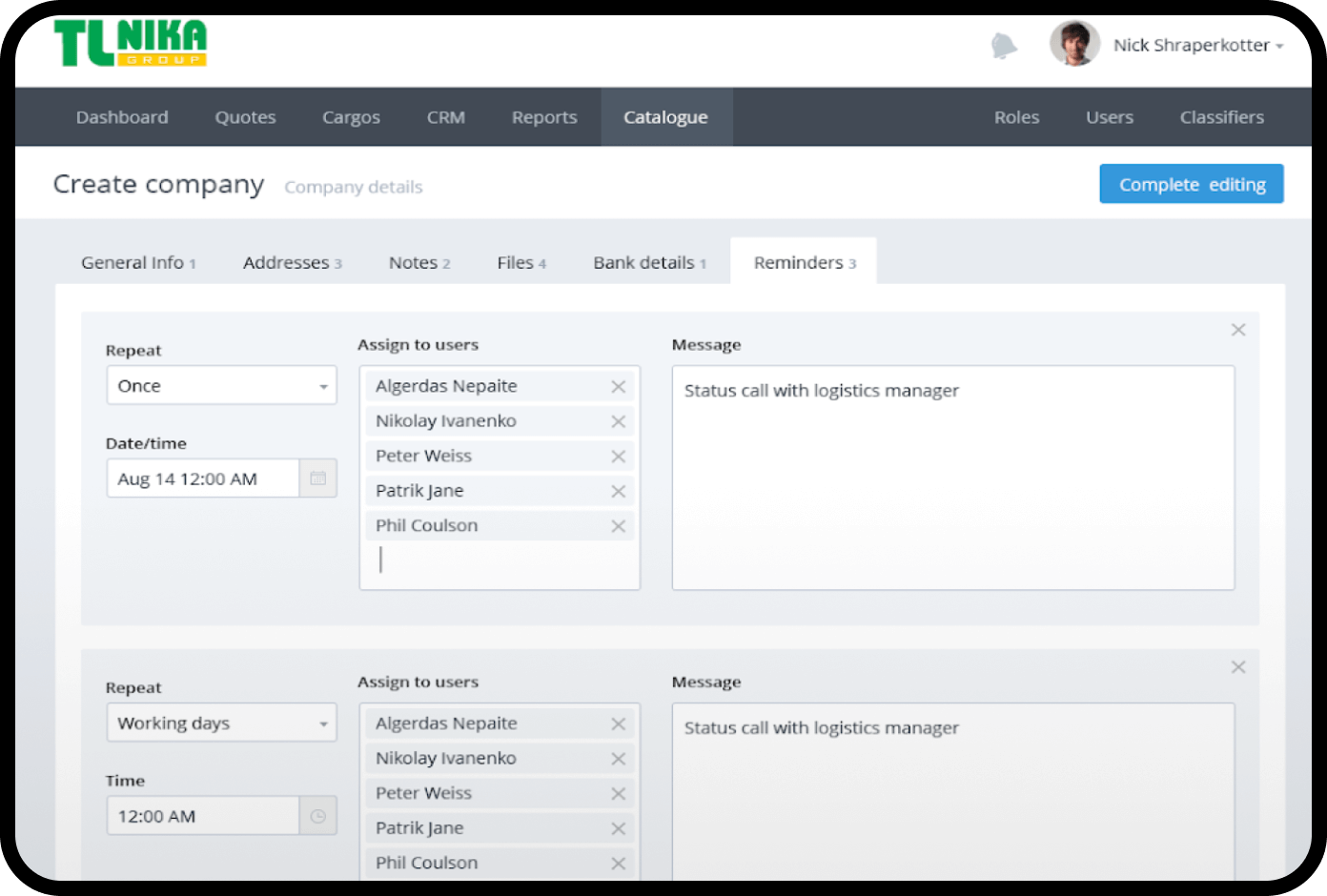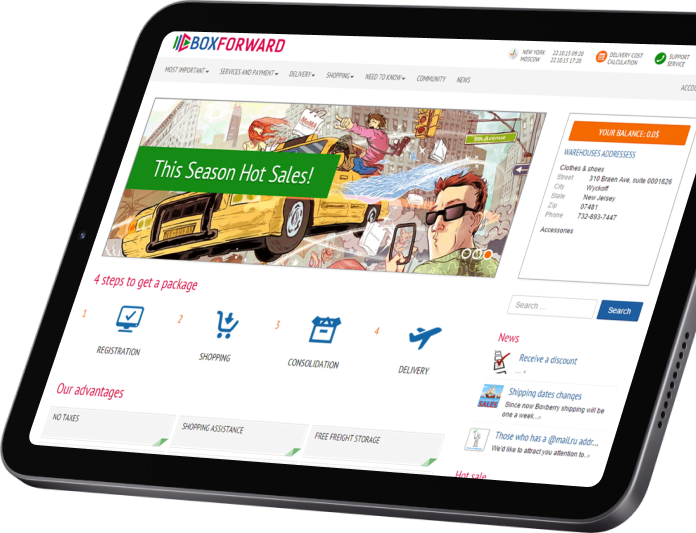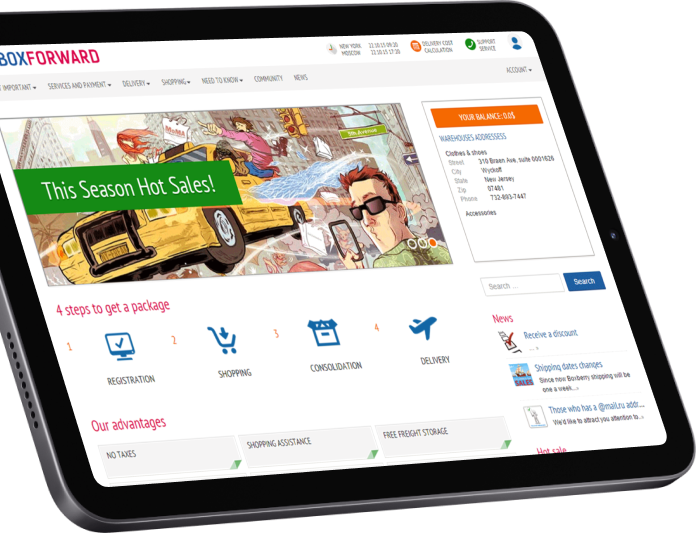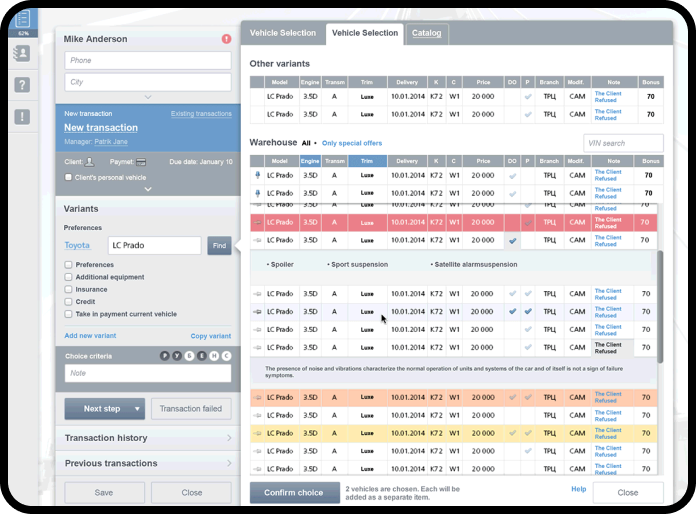Case Study: AI/ML route optimization for a freight delivery service
The platform combines B2B and B2C orders and employs AI/ML to calculate routes that take into account time windows, traffic, and weather, select suitable vehicles, and recalculate ETAs in real-time. The solution reduced total mileage and last-mile costs, increased delivery punctuality, and improved fleet utilization without requiring additional fleet expansion.
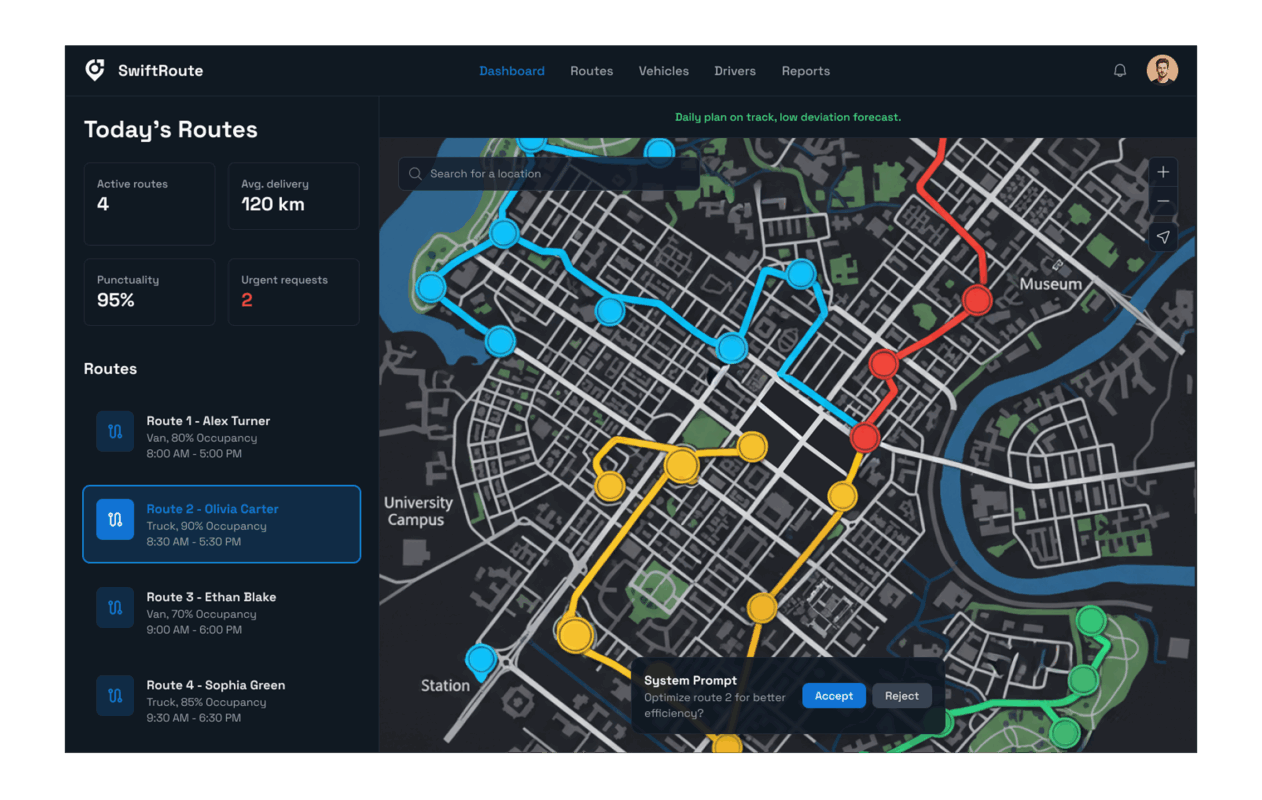
Project details:
About the Client:
The Client is a freight and parcel delivery service operating in both B2B and B2C formats. The company accepts orders from online stores and corporate shippers (including international deliveries for their end customers), as well as point-to-point orders from individuals. The main challenges were high last-mile costs, inefficient routes, uneven order flows, and repeated trips to the same areas by different drivers in vehicles of inadequate capacity.
Location:USA
Industry: Logistics
Team size: 10 specialists (1 Project Manager, 1 Business Analyst, 1 Solution Architect, 2 Backend Developers, 1 UX/UI Developer, 1 Data and Integration Engineer, 1 AI engineer, 1 QA Engineer, 1 Infrastructure and Automation Engineer)
Project duration: 20 weeks
Business сhallenge
SumatoSoft was engaged to develop a unified platform that:
- Optimizes routes that consider time windows, traffic congestion, weather conditions, toll roads, and street closures.
- Automatically selects vehicles and drivers based on the dimensions and weight of shipments to avoid unnecessary volume and split deliveries.
- Balances mixed order flows: scheduled corporate pickups and deliveries, urgent private shipments, and international parcels with consolidation points.
- Processes both pre-ordered and on-the-fly requests throughout the day, reorganizing routes without downtime.
- Improves delivery punctuality and customer transparency through real-time arrival time assessments and notifications.
- Provides dispatchers and managers with centralized analytics on distance, travel time, fleet utilization, delays, and return trips.
Our solution
Order centralization and data normalization
We have combined sources: corporate integrations of online stores, individual requests from the website and the receiving office, and international shipping tasks. The platform compiles all orders into a unified format, including mandatory attributes such as dimensions and weight, loading requirements, pickup and delivery times, the need for customs clearance at intermediate stages, and recipient contact information.
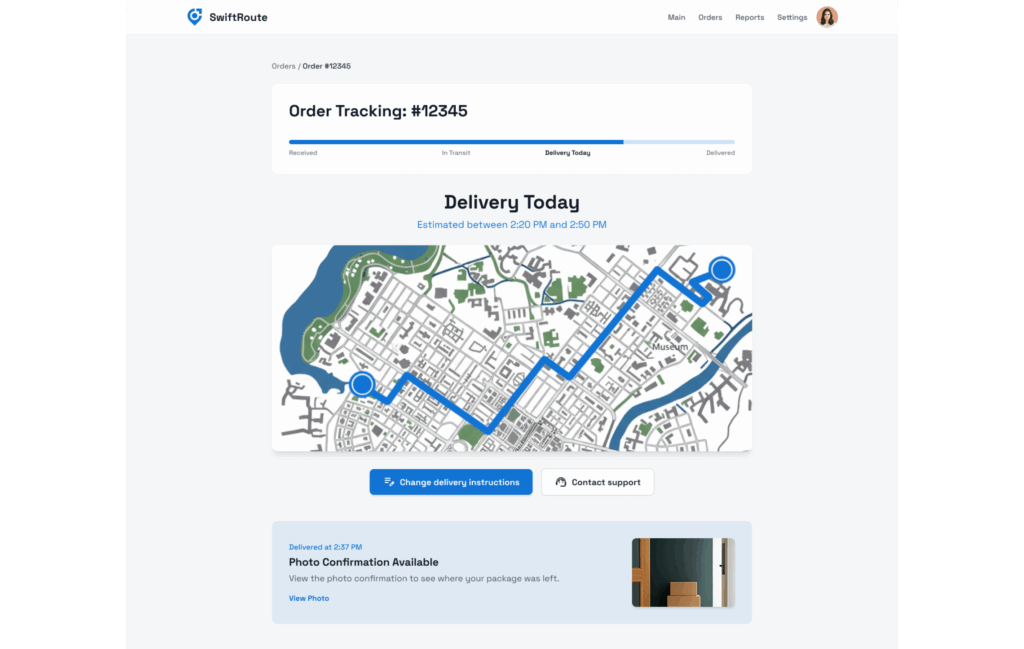
Intelligent route planning
Planning is AI-driven and based on city and regional maps, taking into account traffic volume, weather factors, and time constraints at pickup and drop-off points. The system groups nearby addresses, consolidates orders in one area, and creates a sequence of stops with estimated arrival times. It also assesses traffic congestion and the likelihood of delays. If changes occur during the day, the platform adjusts routes to minimize total mileage and ensure the agreed-upon deadlines are maintained.
Analytics, quality, and security
Managers receive dashboards with key metrics: average delivery mileage, share of repeat trips to a given area, on-time compliance, actual vehicle utilization, and order distribution across areas and times of day. SumatoSoft ensured that data is secure by storing and transmitting it in an encrypted format, restricting access roles, and logging all actions. We also employed ML to improve planning quality gradually using historical route information.
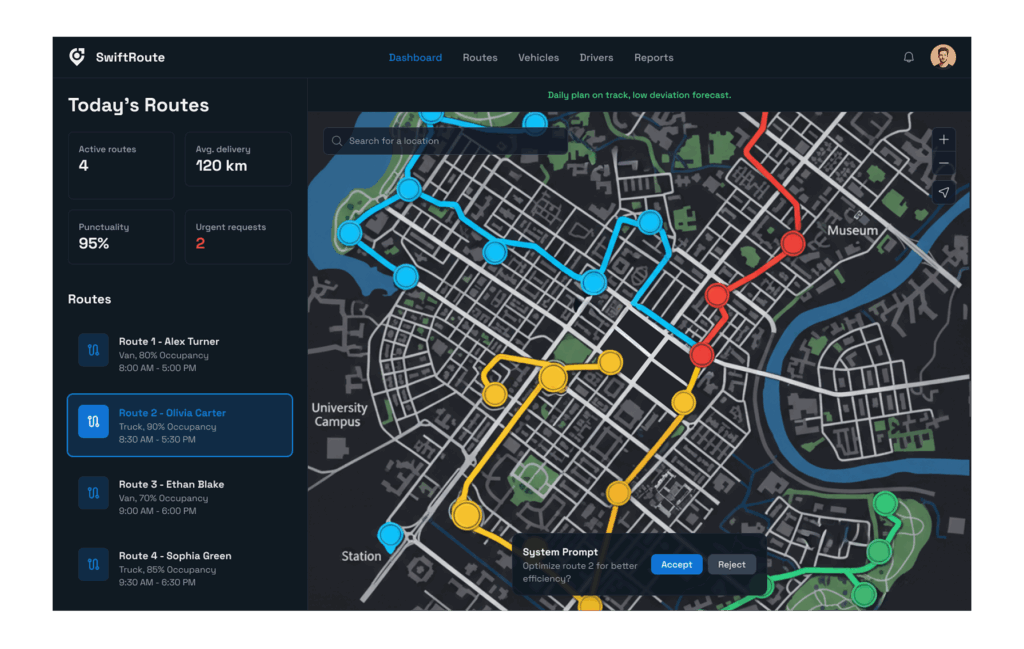
Vehicle selection based on dimensions and restrictions
Operators input data in the system about the cargo volume and weight of each order. A machine learning model assesses the risk of “excess volume” and suggests the optimal vehicle class based on the actual dimensions and weight of the shipment. When creating routes, the system ensures that small shipments don’t get assigned to vehicles with excessive volume, and vice versa. Additionally, it takes into account accessibility features, height restrictions, and unloading times in both business centers and residential areas.
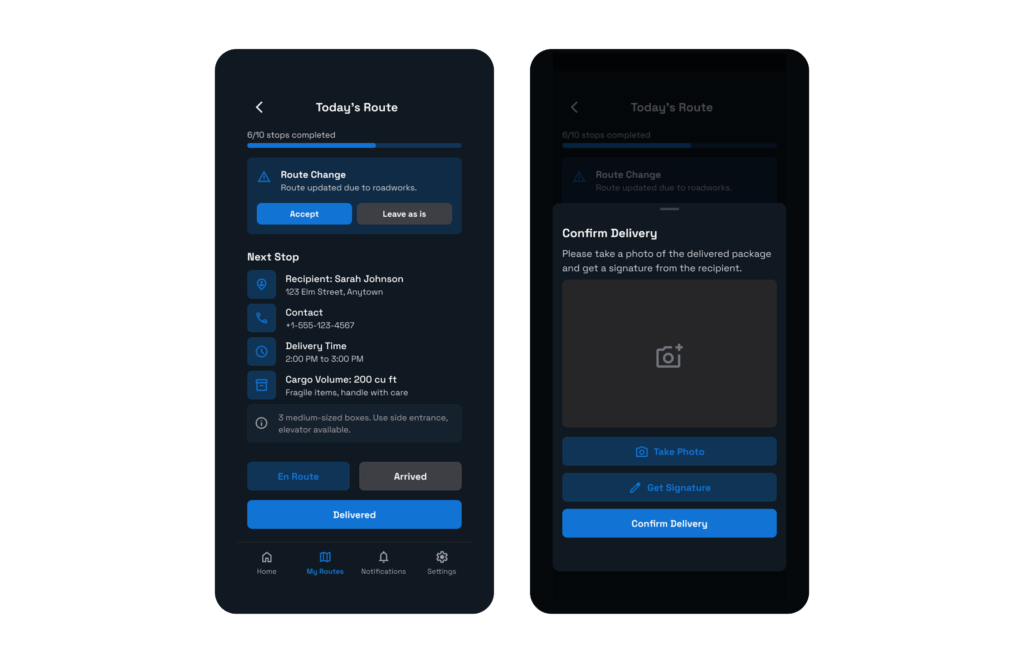
Real-time support for dispatchers and drivers
The dispatcher sees the “day’s health”: current routes, time deviations, AI-driven delay forecasts, and suggestions for changing the stop sequence. The driver receives the route in the mobile app, which includes a list of points, the optimal order, updated arrival time estimates, loading instructions, recipient contact information, and proof of delivery with a photo or signature. In the event of a traffic jam or street closure, the app suggests a safe detour and syncs with the dispatcher’s plan.
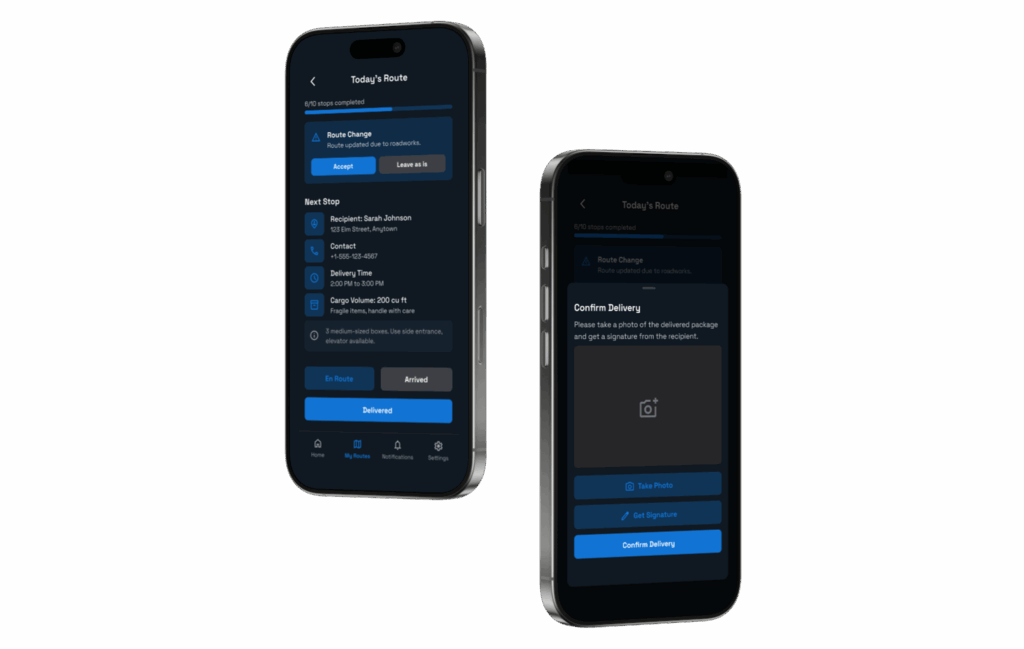
Business value
Before:
- Repeat trips to the same areas using different vehicles.
- Long and irregular trips: some drivers are overloaded, others are idle.
- Inappropriate vehicles for small shipments increase last-mile costs.
- Frequent delays due to traffic jams and urgent midday requests.
- Lack of a unified status overview for the dispatcher, driver, and customer.
After:
- Total delivery mileage reduced by 12-18%; fuel consumption and last-mile costs decreased by 15-22%.
- Delivery punctuality (within the agreed-upon window) increased to 96-98%; delays reduced by 30-40%.
- Fleet utilization was balanced, with vehicle utilization by volume and time increasing by 15-20%, and downtime decreasing by 25-35%.
- Repeat trips to the same area were reduced by 35-45% due to the consolidation and sequencing of stops.
- Response time to urgent requests during the day was reduced by 20-30% while maintaining agreed-upon deadlines for corporate senders.
